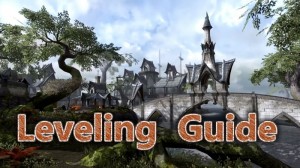 One of the most important things for players in any MMORPG is of course leveling. Getting your characters to endgame and experiencing the game as fast as possible is one of the main goals of many. Not everyone can dedicate hours and hours to play games every day so maximizing your farming time is always on the top of everyone’s list.
One of the most important things for players in any MMORPG is of course leveling. Getting your characters to endgame and experiencing the game as fast as possible is one of the main goals of many. Not everyone can dedicate hours and hours to play games every day so maximizing your farming time is always on the top of everyone’s list.
This guide won’t focus on specific quest walkthroughs and hold your hand when leveling: if that’s your thing you can check out Killerguide. Our beginners guide will show you some general basics of leveling quickly in The Elder Scrolls Online and provide you with some tips and tricks that can improve your experience gain.
Contents:
- Go explore
- Race and class choices
- Builds
- Using weapon swap
- Starting areas
- Skipping quests
- Skyshards
- Mounts
- Gathering crafting materials
- Crafting
- Looting
- Quest levels
- Dungeons
- PvP
Go explore
First thing you should know is that rushing to endgame in TESO isn’t as appealing as it may be in other games. Elder Scrolls Online is designed in a way where exploring the gigantic world of Tamriel and discovering things slowly is preferred and even encouraged. That being said, there are of course benefits to leveling fast: you gain access to more skill points and thus more spells, better equipment, and of course higher level dungeons. More challenging content usually means better rewards, and the ones who get there early will profit the most.
Leveling fast is especially important if you’re part of a guild that aims to seriously compete in Cyrodiil and AvA battles. You can join PvP as early as level 10 and your character attributes will be equalized with higher level players, but having better equipment and access to higher level and typically better abilities can have a significant impact on your success. Being successful in PvP has numerous benefits in itself and it’s yet another reason why you’d want to level up your character faster.
So my first advice would be to take it slow and discover things yourself unless you’re a hardcore player who intends to be the first to do endgame dungeons, crafting or PvP. Exploration is one of the key points of ESO so go out there and enjoy the game.
Race and class choices
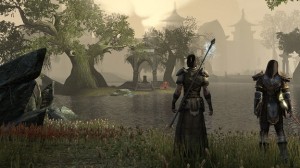 Different races have different benefits, and not all classes and builds level at the same speed. Even if you intend to primarily be a healer later on, leveling up with a majority of your skill points spent into healing abilities will cause you some trouble, especially if you’re mostly tackling content by your lonesome. Fortunately you have access to more than plenty of skill points at later stages of the game, so don’t be afraid to spend more than a few into damage-dealing abilities, especially early on. You should have at least 3 spells focused on dealing damage for leveling — most of which should also be morphed for additional effects.
Different races have different benefits, and not all classes and builds level at the same speed. Even if you intend to primarily be a healer later on, leveling up with a majority of your skill points spent into healing abilities will cause you some trouble, especially if you’re mostly tackling content by your lonesome. Fortunately you have access to more than plenty of skill points at later stages of the game, so don’t be afraid to spend more than a few into damage-dealing abilities, especially early on. You should have at least 3 spells focused on dealing damage for leveling — most of which should also be morphed for additional effects.
If you’re for example a Templar, even one healing spell should be more than enough to top off your health when you find yourself in trouble. Most class or weapon skill trees have access to some self-sustain abilities so take advantage of those! If your build lacks in the defense or sustain department (for example, Sorcerer class), then using abilities with strong CC is advised. Generally for leveling you should ensure you have plenty of damage to be able to take down monsters as quickly as possible.
Builds
Prepare your build in advance. Don’t spend minutes or even longer in the middle of nowhere thinking which spell your next skill point should be allocated to. Spend an hour or two if you must taking a close look at your skill trees and plan about 5 levels in advance. Write down the skills or morphs you intend to take and stick to it. Stopping in the middle of a quest or recalling back to a wayshrine to ponder over numerous choices you have will take more time than planning ahead.
Also consider taking some group-utility abilities like crowd control or heals once you’re level 15 or so. You will start doing dungeons soon enough and a couple of attribute and skill points spent into extra magicka and healing spells could enable you to find a group more easily.
Using weapon swap
Weapon swap becomes available to all characters at level 15. It allows the use of two sets of weapons which can be switched back and forth during combat. What this allows you to do is have one damage-dealing build aimed at leveling, while your alternate build can be more specific such as healing when in groups.
As an example equipping a Restoration Staff as your alternate weapon and spending just a few skill points into the Restoration Staff weapon skill line can make a decent healer out of almost anyone! The best thing about weapon swaps is that the abilities on your action bar also get switched, essentially enabling you to easily switch between two builds as you please, even in combat.
Starting areas
Depending on your choice of Alliance (faction) your character will start in a different area. With three alliances there are also three different starting areas, and not all of them are equal in terms of quests nor graphical setting. We have another guide up which covers starting zones in more (visual) detail, but we’ll take a short look at the first few zones for every faction regardless.
First off all characters regardless of faction or class start in Coldharbour — it’s sort of a tutorial area that takes only about 10-15 minutes of gameplay to complete. Once you’re done with it you’ll be moving to the following areas:
- Daggerfall Covenant – the first area is Stros M’kai, a forest area. After a couple of hours there you’ll move on to Betnikh and then Glenumbra.
- Ebonheart Pact – first zone you find yourself in is Bleakrock, which is a snow-covered area much like most of Skyrim. The second and third zones are Bal Foyen and Stonefalls, both fantasy, forest-like areas.
- Aldmeri Dominion – you start in Khenarthi’s Roost, a tropical setting which I especially like at night. After you’re done you’ll be moving to Auridon, a sizeable area that basically looks like an elven forest.
Generally while it doesn’t really matter in which area you start it may impact your early game experience. For example I for the most part dislike snowy Skyrim-like Bleakrock and I tend to rush through it as fast as I can, so despite me hating the area I typically go through it the fastest just because I want to get to the next zone quickly.
As I said it’s really not important which zone you start in, but it may impact your leveling speed. My suggestion though is to pick an area that you’ll feel most comfortable playing in, and take your time learning the game’s basics at least early on. Rushing through the first area and skipping a quest or two may not hurt you in the long run, but spending an extra hour shouldn’t be overly important either.
See also: ESO Zone Levels.
In endgame you will go through all faction’s starting areas, so eventually you will see all of these zones anyway.
Skipping quests
You don’t have to do all quests you come across, but for the most part you’ll want to complete them rather than grinding monsters. Questing and exploration overall awards you more experience than actually killing stuff, and you’ll also often be getting decent items and gold a rewards. Main quests also often award you with skill points and pretty sweet loot so you may want to complete them before any side quests.
If you can use a disguise and skip monsters in a particular quest area you should do so. Killing mobs takes time and isn’t as rewarding as completing the actual quest is, and even with a disguise you’ll far too often have to kill enemies anyway. Even if you do intend to move on from an area, be sure to fully discover it first: don’t underestimate the experience you gain from exploration. ESO was designed for questing and exploration in mind and you are rewarded for it so my recommendation is to complete all quests, public and group dungeons in an area before moving on. If you don’t, you might find yourself a couple of levels behind monsters which will make it more difficult to kill them and progress further.
That being said, if you think you completed all quests in a particular zone, chances are you’re wrong. Go out there and explore everything, you’ll often find more quests to help you gain another level before you move on.
Skyshards
Throughout Tamriel there are plenty of Skyshards, which is yet another reason why you should go out and explore the world. You’ll be introduced to skyshards in the early tutorial, but just to remind you they are basically objects you find in the world and interact with. Once you find three skyshards you will gain 1 skill point, so it’s extremely beneficial to find as many as you can.
Tutorial area (Coldharbour) has 1 sky shard, and the next couple of zones for every faction each have 3 shards you can find. Later on zones in the game will contain whooping 16 skyshards, and all group dungeons have one inside as well. In Cyrodiil you can find a total of 45 skyshards. Since skill points are so important to your character strength and development you should do your best to find as many as you can. Eventually, you’ll want to go back to any you missed anyway, in which case be sure to refer to our maps to easily find them.
Mounts
If you preordered the game a mount is really inexpensive to obtain. For everyone else though scraping together 17,200 gold can be quite the task. If you don’t have the Imperial horse from preordering the game then you will level up slower than some other players, and it will take quite awhile to gather enough gold to purchase one.
As with any MMORPG your gold gain increases over time, so don’t try and farm that much gold on low levels. If you’re doing particularly well you might be able to purchase one at around level 20, but until then don’t sweat it and just walk to wherever you need to go. We have a dedicated guide on mounts up here so be sure to check it out for more information.
Gathering crafting materials
You will very often come across crafting nodes in the world that can be gathered. In starting areas Jute, Iron Ore and various Runes and herbs are frequently found and helpful to pick up. While you probably won’t immediately delve into crafting, you might find yourself without the necessary resources and ingredients later on so if it doesn’t take you too far from your path be sure to pick up any ore, wood, plants, runes, or other crafting materials you see.
Hoarding a ton of crafting mats though might not be as useful or profitable as you might think so don’t overdo it. Most useful materials you can find are probably runes, as they enable you to enchant items for additional stats. Crafting various weapons and armor while helpful does take time and resources that might be better spend on gaining character experience.
Crafting
Crafts are a significant part of the game and can be very helpful if you know what you’re doing. As mentioned above gathering various materials can be time consuming, but possibly not as much as doing it later on. If you absolutely enjoy crafting then go for it, but if power leveling your character is your goal then don’t overdo it. You can make some useful items for yourself while leveling, but without significant time invested into researching and extracting it will be difficult to create something highly useful.
For the most part items you get from quests, find in chests, and especially those from group dungeons will be more than enough to get you through the game. Once you’re sufficiently high level and can invest skill points into various crafting skill lines you may be able to create decent items to replace your worst gear, but other than that don’t expect much. In endgame items created with crafting are quite amazing though, so keep that in mind. For more information on crafting be sure to check out this article.
Looting
Your character inventory is limited, so picking up every trash item you find, various food ingredients or fishing baits will just clutter it. Very few items can be sold for any substantial amount of gold early on in the game, and there’s even less ways to spend it. If a particular weapon or armor you find it not an upgrade for you then just leave it (unless you’re keeping it for extraction or research, aka crafting). Sometimes I spend even a couple of hours doing quests and not coming across a vendor, so stopping constantly and destroying items to make room for more useful ones is essentially a waste of time.
You should pick up basic crafting materials, potions or equipment you intend to use, but leave most other stuff. When you kill enemies just take a quick glance at what they dropped, take what you need and move on. Thinking about whether you should pick up that weapon and vendor it for 30 gold is already time wasted! Even though it does technically save you time, having “Auto Loot” on isn’t recommended since you’ll end up with a ton of trash.
As a sidenote, you start with 60 item slots for your inventory. The first upgrade adds 10 slots and costs 400 gold. Upgrades are available at bankers in major towns of any area (look for the “bag” icon on town’s map), and it’s your number one priority for spending gold. You can read a more detailed article on character inventory here, explaining how to best manage and increase your bank and character inventory slots.
Quest levels
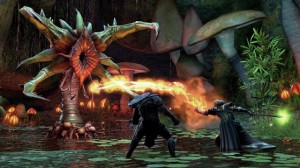 Particularly important after the third area and later, you should always check the quest’s recommended level. If a quest is level 12 and you’re only level 9, you might want to do some easier ones first. As a general rule of thumb quests you obtain from Mages, Fighters or especially Undaunted guilds are higher level and tougher than the random ones you find in the same zone. You can see a quest level in your Journal (“J” hotkey), and they’re also color-coded.
Particularly important after the third area and later, you should always check the quest’s recommended level. If a quest is level 12 and you’re only level 9, you might want to do some easier ones first. As a general rule of thumb quests you obtain from Mages, Fighters or especially Undaunted guilds are higher level and tougher than the random ones you find in the same zone. You can see a quest level in your Journal (“J” hotkey), and they’re also color-coded.
Walking (or riding) to a quest for 5 minutes only to find out you can’t quite kill the pesky boss is not only annoying but also a waste of time. Public dungeons can take quite a long time to complete on your own, so do your best to group up with others to make it faster. Do easier quests first, and try to focus on completing most if not all quests in a specific part of the zone in the same time so you don’t have to walk back and forth multiple times. An additional tip, if you’re near a Wayshrine you should take the time to go and activate it. It’s the fastest way to travel through a zone, and even early on very inexpensive.
Another tip: traveling to a waypoint from another waypoint (as opposed to recalling from random places in the world) doesn’t cost you any gold. Even though it’s not very expensive it can add up after awhile, and that gold can be better spent to upgrade your inventory or bank space.
Group Dungeons
You should not skip group dungeons! They are generally easy to complete as long as you have a fairly competent group, but make sure you have a dedicated healer and tank, it does help a great deal. Dungeons are a great way to get some additional experience and equipment, as well as learn more about the group mechanics in The Elder Scrolls Online which will benefit you in the long run.
First dungeons are aimed for levels 12-15, and depending on your Alliance the first you’ll come across will be:
- Ebonheart – Fungal Grotto (in Stonefalls)
- Aldmeri – Banished Cells (in Auridon)
- Daggerfall – Spindleclutch (in Glenumbra)
Unless you have a group ready to go you should enter the instances when you’re almost done with all other quests in the particular area, since the extra few levels can help greatly. As previously mentioned, before you go to your first dungeon try to learn (or morph) a heal, taunt or CC (depending on your build of course) spell so you have some additional group utility. Also see if there’s an Ultimate you could learn that would benefit your group more, or be more powerful if someone used synergy from it. It’s also helpful to get to level 15 before you enter your first dungeons since you’ll be able to use weapon swap at that point. If you need additional skill points head on to our maps page and find the skyshards you missed!
Unfortunately unlike most other content you can do in TESO dungeons give an underwhelming amount of experience, so if leveling quickly is your goal you might not want to repeat each dungeon more than once. Still, they are fun encounters you should definitely check out. We have a more comprehensive guide for dungeons here, so make sure you read it!
PvP
Leveling entirely in Cyrodiil isn’t impossible, but it’s far from the most optimal way to gain experience. You can join Cyrodiil at level 10, and your character’s base attributes will be increased to somewhat enable you to stay relevant among higher level players. Nevertheless the experience gains in PvP combat are far lower than in PvE content, so even those of you who are solely interested in player versus player battles will want to at the very least complete the main quest line in every zone.
Exploration, public and group dungeons, and questing in general are all more efficient for fast leveling in Elder Scrolls Online, and also give you access to more skyshards and skill points to improve your abilities. Don’t skip PvP because it’s a fun and worthwhile experience, but don’t expect to level up solely in Cyrodiil.
You can get more detailed zone overviews and quest walkthroughs from Killerguide, but I still hope my tips and tricks are at least a bit helpful. I’d love to hear your own experiences and leveling tips so be sure to post them in the comments below.

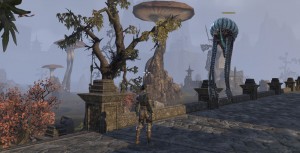
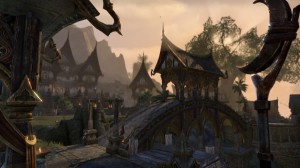
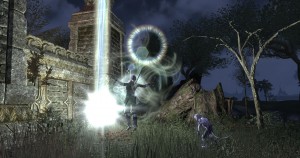
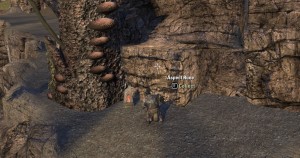
When looting keeping in mind a craft (blacksmith or cloth) can provide extra items for “traits” and standard mats when extracted.
awesome review thank you, I have a question though. Do you know if crafting: black smithing tailoring ect… puts up your chars main exp as well as the provision.?
Crafting experience (called Inspiration) is separate from your character experience. I’d have to double-check to be completely sure, but I’m 95% certain your character doesn’t gain experience or levels from increasing Inspiration.
As a sidenote, you gain more inspiration from deconstructing and extracting (high) level items. Crafting items (creation) doesn’t actually give a significant amount of XP, it’s intended to be a source of items. Extracting and deconstructing items is the fastest way to level your craft skills, and most items you find in the world are fairly worthless in terms of gold value if you vendor them, so it’s recommended to use them for extraction or research.
Great Tutorial, will sure help me in the long run. Some things contradict to what others are saying. But will find out soon enough!
Thanks for sharing.. Awesome!